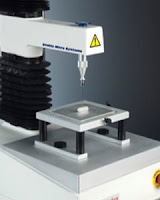The potential for oral dosage form development is severely limited for active agents that are poorly absorbed in the upper gastrointestinal (GI) tract and unstable to proteolytic enzymes. Some agents cause local stomach or upper GI irritation or require doses in excess of 500mg. Additionally, treatment of some diseases is best achieved by direct administration near the affected area, particularly with diseases involving anorectal tissues.
Although oral administration can be used for drugs targeted for some of these diseased tissues, exposure of the entire body compartment to the administered drug is inefficient and can lead to undesired adverse effects.
Rectal drug administration is amenable, however, to both local and systemic drug delivery. It has been effectively utilised to treat local diseases of the anorectal area as well as to deliver drugs systemically as an alternative to oral administration, particularly where exposure of the entire body compartment to the administered drug is inefficient and can lead to undesired adverse affects.
Although rectal drug administration is unlikely to ever become a
commonly accepted route of administration, the utilisation of this technology
(most commonly if the form of suppositories) for particular applications and
therapeutic problems offers an alternative delivery route which can be successfully
applied in drug therapy.
Measuring Suppository Hardness
Traditionally
it has been very difficult to quantify and compare suppository texture between
products because of differences in product sizes, geometries, packaging and
layering behaviours.
 Suppository
texture is important for:
Suppository
texture is important for:• Optimised comfort
• Breakage prevention during insertion
• Minimised negative consumer perception when the texture is too soft or too hard.
Using a 2mm Needle probe attached to a Texture Analyser the suppository is slowly penetrated to a distance of 3mm.
The area under the curve, is the work required to penetrate the sample to the specified distance. The higher this value is, the ‘harder’ is the sample.
 Samples may prove to have a ‘skin’, which when
punctured is shown as a peak, or have an inconsistent texture or air pockets,
which present themselves as fluctuations in the force as the sample is
penetrated. Clearly, the hardness of the
four suppository types is different (see graph right).
Samples may prove to have a ‘skin’, which when
punctured is shown as a peak, or have an inconsistent texture or air pockets,
which present themselves as fluctuations in the force as the sample is
penetrated. Clearly, the hardness of the
four suppository types is different (see graph right). Curves produced from four different formulations of of suppositories, tested at 20°C.
This test method enables accurate comparisons to be made across a wide variety of suppository types. In addition, it can also evaluate differences in ingredients, processing conditions and behaviour under different temperature conditions.
We can design and manufacture probes or fixtures for the TA.XTplus texture analyser that are bespoke to your sample and its specific measurement.
Once your measurement is performed, our expertise in its graphical interpretation is unparalleled. Not only can we develop the most suitable and accurate method for the testing of your sample, but we can also prepare analysis procedures that obtain the desired parameters from your curve and drop them into a spreadsheet or report designed around your requirements.
For more information on how to measure texture, please visit the Texture Analysis Properties section on our website.
 The TA.XTplus texture analyser is part of a family of texture analysis instruments and equipment from Stable Micro Systems. An extensive portfolio of specialist attachments is
available to measure and analyse the textural properties of a huge range of
food products. Our technical experts
can also custom design instrument fixtures according to individual
specifications.
The TA.XTplus texture analyser is part of a family of texture analysis instruments and equipment from Stable Micro Systems. An extensive portfolio of specialist attachments is
available to measure and analyse the textural properties of a huge range of
food products. Our technical experts
can also custom design instrument fixtures according to individual
specifications.No-one understands texture analysis like we do!
To discuss your specific test requirements click here...
|




No comments:
Post a Comment